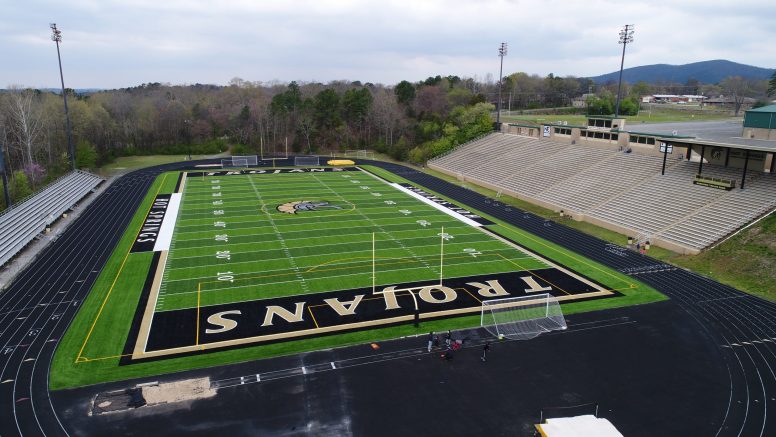
Synthetic Turf, Then, and Now
Learn about synthetic turf, then, and now with Sporturf.
On July 19, 1966, the Astros and Phillies stepped out onto a baseball field made entirely of synthetic turf. That game at the Astrodome was the first time synthetic turf was used in a professional sports game. When the Astrodome opened in 1965, the field was composed entirely of natural grass; however, the roof of the dome soon had to be painted because outfielders could not properly see fly balls. When the roof was painted, the grass died, and synthetic turf became the solution.
Source: Simon, Andrew. (17 April 2016). Artificial Turf debuted in Majors 50 Years Ago. MLB. Retrieved from https://www.mlb.com/news/artificial-turfs-50th-anniversary-in-baseball/c-172874106
Through the decades, synthetic turf became recognized for its all-weather capabilities and spread to various baseball, football, and soccer stadiums across the US, Canada, and Europe. Fans and athletes, though, started to take issue with the original synthetic turf products. Early versions of synthetic turf seemed not as aesthetically appealing as natural grass and also were said to be less forgiving in terms of athlete injuries. However, since the 1990s, synthetic sports surface technology has produced significant advancements, making synthetic turf more and more similar to natural grass while still maintaining its durability and all-weather capabilities.
For instance, the original turf used in the Astrodome in the 1960s was basic carpet and pad. Carpet and pad were eventually replaced by silica-sand infill products. However, the greatest advancement came in the 1990s when most or all of the sand infill was replaced with crumb rubber. Today, everything from crumb rubber to coconut fibers is used as infill for turf.
In addition to infill, according to Athletic Business and David Nardone, leader of the Boston-based sports group for architecture firm Santec, “the synthetic fibers that make up the ‘blades’ of the field have also improved offering better performance and durability.” Different systems have also been developed for different needs. For example, rugby or football field systems will differ from field hockey or soccer.
The latest generation of synthetic turf can also withstand extended use, unlike natural grass playing fields that need recovery time after heavy rains and drought or after simply being used three or four days a week.
Source: AB Staff. (April 2017). An Overview of Advancements in Synthetic Turf. Athletic Business. Retrieved from https://www.athleticbusiness.com/outdoor/an-overview-of-advancements-in-synthetic-turf.html
Thanks to such technological improvements, the Synthetic Turf Council estimates that there are between 12,000 and 13,000 synthetic turf fields in the United States, with approximately 1,200 to 2,000 new installations each year.
Source: About Synthetic Turf. (2014). Synthetic Turf Council. Retrieved from https://www.syntheticturfcouncil.org/page/About_Synthetic_Turf
Overall, synthetic turf systems can be used for a range of indoor and outdoor sports, including functional fitness, baseball, football, field hockey, soccer, tennis, lacrosse, golf, and track. They have also proven to be cost-effective and eco-friendly landscape solutions for residential and commercial projects and aid water conservation. Regardless of the application, synthetic turf systems require minimal maintenance in comparison to natural grass and provide functional, innovative green spaces that meet a variety of needs.
